The in-house-built portable milli-XRF spectrometer (pXRF) includes a side-window low power X-ray tube with a Rh anode (75 μm Be window, 50Kv, 1mA). The characteristic X-rays emitted from the sample are detected by a Si-PIN diode X-ray detector (Amptek XR-100CR, with 165 eV FWHM at MnKα, 500 μm Si crystal thickness and 12.7 μm Be window) placed at 45° from the normal of the sample surface. The beam size at the sample position is ~2.7 mm. Multi-elemental analyses are carried out by utilizing an unfiltered exciting beam at 15kV high voltage condition and with a filtered beam e with the tube operating at 40 kV. Two laser points coupled on the head of the spectrometer are aligned in such a way as to ensure the placement of the analyzed area on the reference plane. In house developed quantification procedures for sample elemental analyses have been developed and validated.
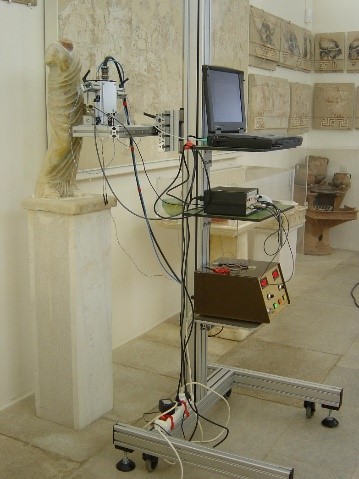
The milli-probe pXRF spectrometer at the archaeological museum of Delos analyzing traces of ancient polychromy on Hellenistic marble sculptures, 2004
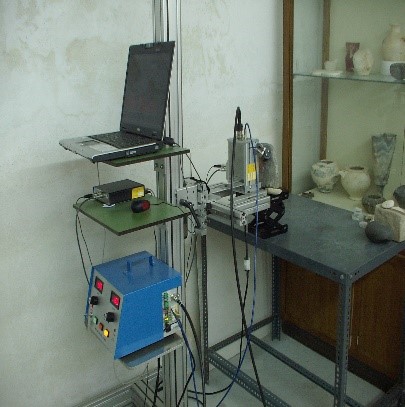
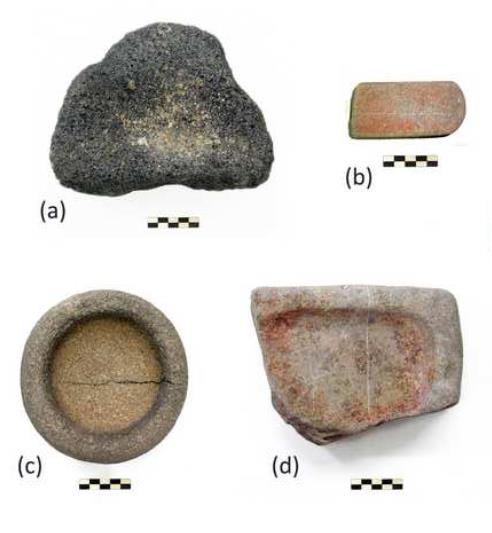
The milli-probe pXRF spectrometer performing in-situ measurements of traces of ancient polychromy at the National Arcaheological Museum of Athens in collaboration with Prof. Ph. Jockey and Dr. Brigitte Bourgeois (CNRS), 2005
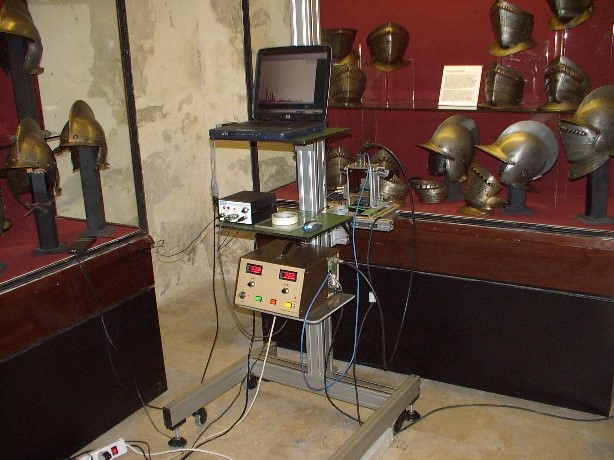
The milli-probe pXRF spectrometer performing in-situ analyses at the Armoury museum in Malta within the framework of the FP6 project PROMET, 2007
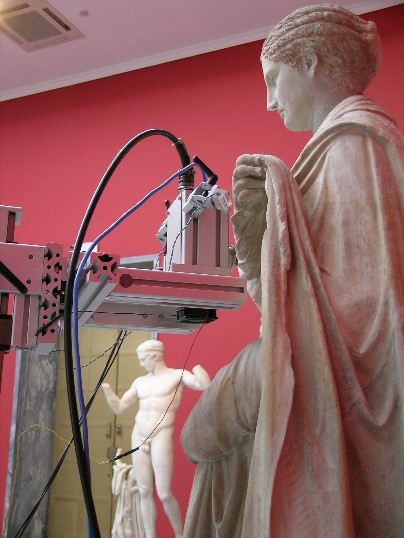
The milli-probe pXRF spectrometer performing in-situ measurements of traces of ancient polychromy at the National Arcaheological Museum of Athens in collaboration with Prof. Ph. Jockey and Dr. Brigitte Bourgeois (CNRS), 2005
